Past Postgrad Students
These are some of our recently graduated PhD students. Read about what they are up to now, and what they were studying while they were at La Trobe.
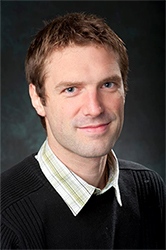 Kevin Farnier
Kevin Farnier
After a short stint in the UK, working on the development of lures for the spotted wing Drosophila, I have recently joined the invertebrate and weed science group at AgriBio. My role consists of developing new lures for the monitoring and control of Tephritid flies in orchards. Using an integrative approach including insect behaviour (wind tunnel, olfactometers), chemical analysis (GC-MS), electrophysiology (GC-EAD) and field studies, my aim is to mitigate the chemical ecology underpinning interactions between insects, microbes (especially yeasts) and host plants in view of implementing more efficient and sustainable pest monitoring and management strategies and; at the same time; provide an insight into the adaptations of insects’ olfactory systems in the context of the evolution of their association and utilization of their host plants.
PhD Project: Behavioural responses of psyllids (Hemiptera: Aphalaridae) to olfactory and visual cues of their eucalypt hosts
Insects use chemical, visual and tactile cues to identify host plants from non-hosts and to assess their suitability for eating and supporting the development of their offspring. Eucalyptus-feeding psyllids span species that only feed on one host (sometimes only a specific morphological leaf type) to species that use a range of hosts. My PhD focused on how different cues mediate these interactions. I wanted to understand how the composition of eucalypt secondary metabolites influenced the sensory capabilities of psyllids and how their responses enable them to exhibit different preferences for a genus of tree whose members produce many identical compounds.
Supervisor: Assoc. Prof. Martin Steinbauer
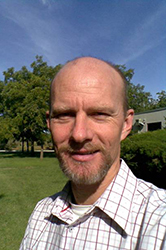 Bruce Gill
Bruce Gill
Bruce is employed as a hydrogeologist with the Victorian Department of Economic Development, Jobs, Transport and Resources.
PhD Project: Application of 3D hydrogeology methods to groundwater resource management.
Bruce studied groundwater resource management. Also a research hydrogeologist with the Victorian Department of Economic Development, Jobs, Transport and Resources, Bruce's study looked into how 3D mapping and visualisation of important groundwater supply systems can help groundwater resource users and managers improve groundwater resource management.
Supervisor: Assoc. Prof. John Webb
 Mark Hall
Mark Hall
Mark is employed as a Research Fellow at the Hawkesbury Institute for the Environment, University of Western Sydney.
PhD Project: The role of vegetated linear networks for fauna conservation within agricultural environments
Mark studied agricultural landscapes and the habitat features that influence the species richness and composition of woodland bird and native bee communities. The focus of his PhD research was on linear strips of vegetation (roadsides and streams) and scattered paddock trees, and tested their importance as habitat and areas for foraging and breeding. The results of this study answer important ecological questions and assist land managers in better targeting management actions to improve site suitability for woodland birds and native bees within heavily modified environments.
Supervisors: Prof Andrew Bennett, Dr Simon Watson, Dr Dale Nimmo (Charles Sturt University)
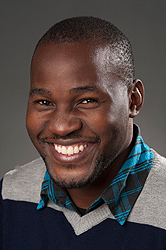 Umar Lubanga
Umar Lubanga
I am currently employed as a Research Scientist by Agriculture Victoria and work at AgriBio, Centre for AgriBioscience in Melbourne. I am part of a team researching insect biological control of Wandering Trad (Tradescantia fluminensis) which is an environmental weed of national significance.
PhD Project: Reproductive biology, signalling and sexual selection in the She-oak psyllid Aacanthocnema dobsoni (Froggatt) (Hemiptera: Triozidae)
Mating in insects is preceded by a series of highly synchronised, complex courtship behaviours between males and females. The signals used by different taxa reflect aspects of that insect’s habitat as well as the phylogenetic constraints and adaptive syndromes of the species. Insect sex pheromones (long-range signals), vibrational/acoustic signals (short-range signals) and visual signals may be used either in isolation or in combination to facilitate mating. I studied the vibrational and chemical signals and cues used in courtship and mating of the She-oak psyllid, Aacanthocnema dobsoni.
Supervisor: Assoc. Prof. Martin Steinbauer
 Fred Rainsford
Fred Rainsford
I am currently working at La Trobe University as a postdoctoral researcher on the Farm-scale Natural Capital Accounting Project in the Research Centre for Future Landscapes
PhD Project: Managing fire, flora and fauna – how does fire drive species distributions?
Fire is a driver of change in ecosystems throughout the world. As the interface between human settlement and wild lands increases, and with the changing climate predicted to cause more frequent and severe wildfires, there is the increasing need to manage the landscape for the consequences of fire. But fire affects species and, consequently, ecosystems differently depending on their fire-response strategy and the environmental context. For fire management to achieve conservation outcomes, we must understand these nuances. Using ecological modelling tools and a combination of historical records and field studies, my research aims to further our understanding of how fire, climate and the environment drive the distributions of plant and animal species in some of the world’s most fire-prone ecosystems.
Supervisor: Prof. Andrew Bennett
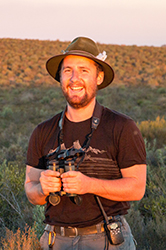 Simon Verdon
Simon Verdon
I am currently working as a Post-Doctoral Researcher as part of the La Trobe University Research Centre for Future Landscapes. The project I am working on aims to improve the way we manage fire in the desert heathlands of western Victoria. Specifically we hope to determine the fire regimes that most effectively promote populations of native birds and plants
PhD Project: How does a dispersal-limited bird persist in a shifting and fragmented landscape?
The mallee emu-wren Stipiturus mallee is the epitome of the Aussie battler. It weighs barely five grams, it considers ten metres a long flight, and it resides in some of the world’s most flammable vegetation. Like many Australians, the mallee emu-wren is trapped by a paradoxical relationship with fire. It requires fire to create new habitat, yet fire is a major contributor to local extinctions of this species. It is a poor disperser, yet its habitat is intrinsically fragmented. I am using long-term distribution data and ecological modelling to aid me in my investigations into the ecology of this fascinating species.
Supervisor: Prof. Mike Clarke
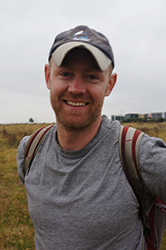 Ben Zeeman
Ben Zeeman
Ben has moved to western Victoria and is now working as a Vegetation Management Officer at Glenelg-Hopkins Catchment Management Authority.
PhD Project: Two decades of vegetation change across a critically endangered temperate grassland ecosystem
Ben’s PhD explored how changes to historic disturbance regimes, nitrogen deposition and habitat fragmentation as a consequence of urbanisation can lead to biotic homogenisation among native vegetation communities. This research was conducted in critically endangered native grasslands on the Victorian volcanic plain, an ecosystem that has been extensively cleared since European settlement. Ben examined how long-term differences in the management of urban and rural grasslands affected the patterns of native species extinction and exotic species invasion as well as exploring potential actions to reverse native grassland degradation.
Supervisor: Dr John Morgan